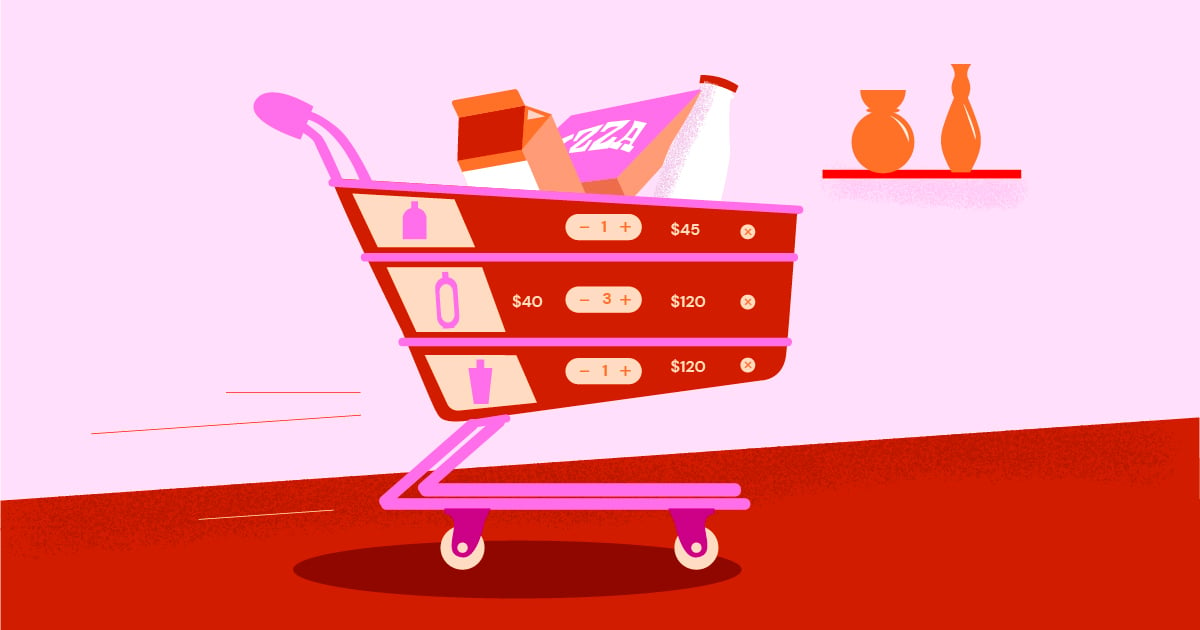Table of Contents
The traditional model of creating and selling products is a beast to tame. But what if there was a way to offer unique, personalized products without the headaches of inventory management, upfront costs, or complex fulfillment processes?
Enter print-on-demand (POD), the secret weapon that’s transforming the way WooCommerce entrepreneurs do business. With POD, you can bring your wildest design ideas to life on a wide range of products – t-shirts, mugs, phone cases, you name it – all without lifting a finger in the production process. And with Elementor by your side, building a stunning online store to showcase your custom creations has never been easier.
This ultimate guide will explore the seven best print-on-demand companies that seamlessly integrate with WooCommerce, giving you the power to create a thriving custom merch business without the usual stress. We’ll explore each platform in detail, guide you through setting up your own POD store, and share expert tips for maximizing your profits.
Whether you’re a seasoned seller or just starting out, get ready to unlock the full potential of print-on-demand and watch your custom merch empire flourish.
Understanding Print-on-Demand & Its WooCommerce Synergy
Print-on-demand (POD) is a revolutionary business model that empowers entrepreneurs and creators to sell custom-designed products without the burden of holding inventory. Unlike traditional manufacturing, where you need to order large quantities of products upfront, POD allows you to create and sell products only when a customer places an order.
How Does Print-on-Demand Work?
- Design: You create unique designs or artwork that you want to feature on various products, such as t-shirts, mugs, phone cases, tote bags, and more.
- Upload: You upload your designs to a POD platform, which integrates with your online store.
- Customer Orders: When a customer places an order for one of your custom products, the order is automatically sent to the POD platform.
- Production & Fulfillment: The POD company handles everything from printing the design on the product to packaging and shipping it directly to the customer.
- You Get Paid: You earn a profit margin on each sale, which is the difference between the product’s retail price and the POD company’s base cost.
The WooCommerce & POD Power Couple
WooCommerce, a flexible and powerful ecommerce plugin for WordPress, is a perfect match for print-on-demand businesses. With its robust features and extensive customization options, WooCommerce allows you to create a professional online store tailored to your brand and products. By integrating a POD plugin (often provided by the POD company itself), you can seamlessly connect your WooCommerce store with your chosen POD provider. This integration automates the entire process, from product creation and order management to fulfillment and shipping.
Why Print-on-Demand is a Game-Changer for Custom Products
POD offers numerous advantages for entrepreneurs looking to sell customized products:
- No Upfront Investment: You don’t need to invest in inventory or production equipment, eliminating the financial risk associated with unsold stock.
- Scalability: POD allows you to easily scale your business as demand grows without worrying about production limitations.
- Customization: You can offer a wide range of personalized products, allowing customers to express their individuality.
- Focus on Creativity: With production and fulfillment handled by the POD company, you can focus on designing unique products and marketing your brand.
- Niche Markets: POD enables you to cater to specific interests and communities with niche products that wouldn’t be feasible with traditional manufacturing.
Elementor: Your Website-Building Ally
A visually appealing and user-friendly website is crucial for showcasing your custom products and attracting customers. Elementor, a popular drag-and-drop website builder for WordPress, empowers you to create stunning online stores without any coding knowledge. Its intuitive interface, extensive template library, and powerful design features make it a perfect choice for building your POD empire.
Choosing Your Perfect POD Partner: The Essential Criteria
Selecting the right print-on-demand company is crucial for the success of your WooCommerce store. Each POD provider offers unique features, pricing models, and product catalogs. To ensure a seamless integration and a profitable business, you need to consider several key factors when making your decision.
1. Product Catalog: Your Canvas for Creativity
The range and diversity of products offered by a POD company directly impact your store’s potential. While some providers focus on apparel (t-shirts, hoodies, etc.), others offer a wider range of items like mugs, phone cases, wall art, home goods, and even stationery. Assess your target audience and niche to determine which product categories align best with your brand and customer preferences.
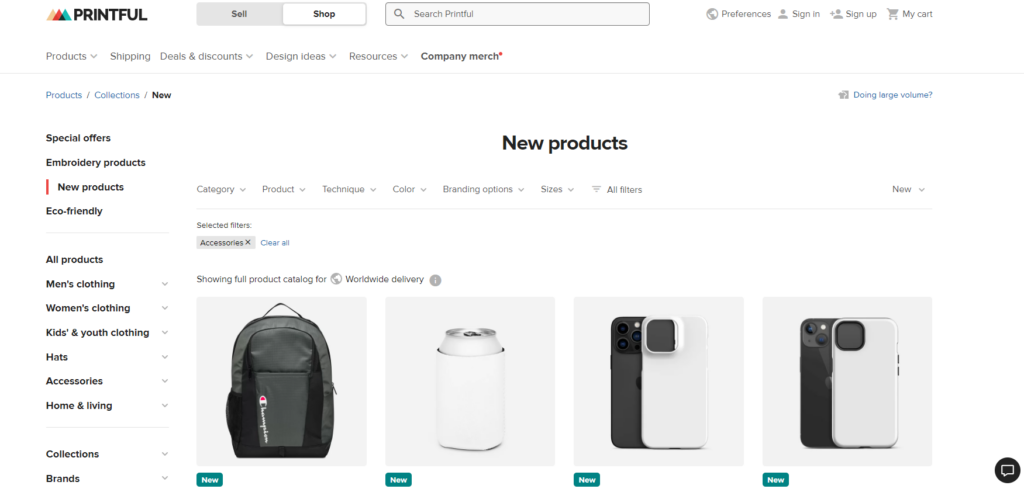
A broader product catalog allows you to diversify your offerings and cater to a wider range of interests. Look for POD companies that regularly update their catalog with new and trending items to keep your store fresh and exciting.
2. Print Quality: Where Art Meets Technology
Print quality is paramount for customer satisfaction and brand reputation. Different POD companies employ various printing techniques, such as:
- Direct-to-Garment (DTG): Offers excellent detail and vibrant colors for intricate designs on apparel.
- Sublimation: Ideal for all-over prints on polyester fabrics and hard surfaces like mugs and phone cases.
- Cut & Sew: Provides a premium look and feel for more complex garments with multiple fabric panels.
- Embroidery: Adds a touch of elegance and texture to apparel and accessories.

Research the printing techniques used by each POD company and order samples to evaluate the quality firsthand. Ensure the print quality aligns with your brand’s image and the expectations of your target audience.
3. Pricing Models: Your Path to Profitability
Print-on-demand companies have varying pricing structures, and understanding them is key to setting profitable retail prices for your products. Most POD providers charge a base cost per item, which covers the product itself, printing, and sometimes even packaging. You then add your markup to determine the retail price, with your profit being the difference between the two.
Some companies offer subscription plans with monthly fees that unlock additional benefits like discounted base prices or access to premium features. While these plans might be worth it for high-volume sellers, they might not be necessary for those just starting.
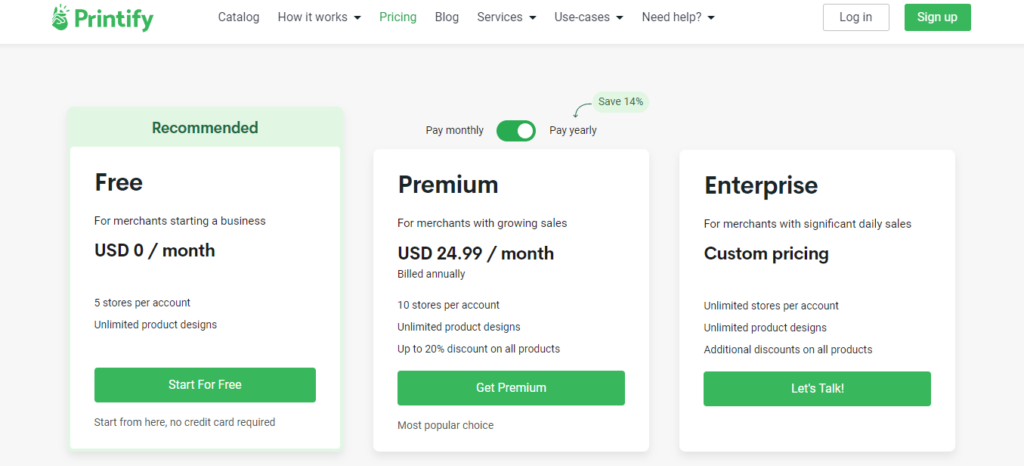
Be sure to carefully analyze the pricing models of each POD company you consider. Look for transparent pricing with no hidden fees. Calculate potential profit margins based on your desired retail prices to ensure you can achieve your financial goals.
4. Shipping: Getting Your Products to Customers’ Doorsteps
Shipping costs and delivery times are crucial factors for customer satisfaction and repeat business. When evaluating POD companies, consider:
- Domestic and International Shipping: Does the company offer worldwide shipping, or is it limited to specific regions?
- Shipping Rates: How much will it cost to ship your products to different locations? Are there discounted rates for bulk orders or combined shipping options?
- Delivery Times: How long does it typically take for orders to reach customers in different regions?
- Shipping Methods: Does the company offer various shipping options (standard, expedited, etc.) to cater to different customer preferences?
- Tracking and Insurance: Are tracking numbers provided for all orders? Is shipping insurance available to protect against lost or damaged packages?
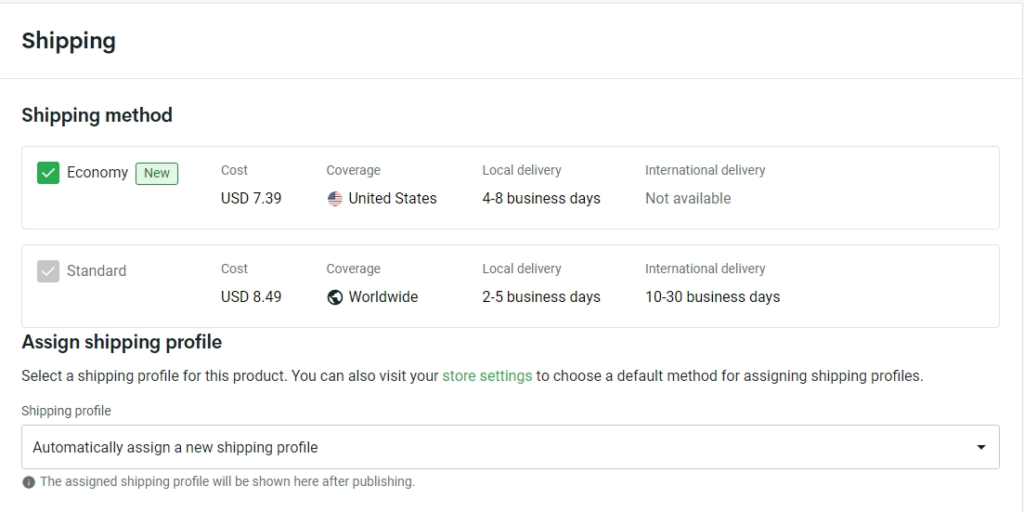
Remember, shipping costs can significantly impact your profit margins and customer experience. Choose a POD provider that offers competitive shipping rates and reliable delivery times to ensure your customers receive their orders promptly and in good condition.
5. WooCommerce Integration: Your E-Commerce Powerhouse
The ease and effectiveness of a POD company’s WooCommerce integration can make or break your workflow. A smooth integration should automate tasks like:
- Product Creation: Automatically sync your product designs and variations from the POD platform to your WooCommerce store.
- Order Management: You can send orders directly to the POD company for fulfillment, eliminating the need for manual data entry.
- Inventory Management: Keep track of stock levels and avoid overselling by syncing inventory data between platforms.
- Shipping Updates: Automatically update tracking information in WooCommerce so customers can monitor their order status.
Some POD plugins even offer design customization tools within the WooCommerce dashboard. These tools allow you to create and edit product mockups directly in your store, streamlining your design process and giving you more control over the final product.
6. Customer Support: Your Lifeline in a Pinch
Even with the most seamless integrations, questions or issues are bound to arise. Strong customer support from your POD partner can save you time, frustration, and potentially lost sales. Evaluate the following aspects:
- Support Channels: Do they offer email, phone, live chat, or a ticketing system? Multiple options are ideal for different preferences and urgency levels.
- Responsiveness: How quickly do they typically respond to inquiries? Look for companies with a reputation for prompt and helpful support.
- Knowledge Base: Do they have a comprehensive knowledge base or help center with articles and tutorials to guide you through common challenges?
- User Reviews: Check online forums, social media, and review sites to gauge other users’ experiences with the company’s customer support.
Remember, excellent customer service can be a deciding factor when choosing between similar POD providers.
Elementor’s Role in Smoothing the Support Journey
While Elementor doesn’t directly offer customer support for POD integrations, its user-friendly interface, and extensive documentation can help you troubleshoot basic issues yourself. For more complex problems, Elementor’s active community forums and expert support team can provide valuable assistance with website-related questions.
Incorporating Data:
A potential enhancement to this section would be to include data on average response times or customer satisfaction ratings for the POD companies being reviewed. This would provide readers with concrete information to compare support levels. However, finding reliable data on this can be challenging, as it often depends on individual experiences and varies over time.
Design Tools & Customization Options: Unleash Your Creativity
The level of design flexibility offered by a POD company can significantly impact the uniqueness of your products. Look for features like:
- Mockup Generators: These tools allow you to visualize your designs on different products before they’re printed, ensuring your vision comes to life as expected.
- Customization Options: Some platforms offer advanced design tools that let you add text, images, and even custom elements to your products.
- Print Area Restrictions: Be aware of any limitations on where and how large your designs can be printed on specific products.
- Color Options: Consider the range of colors available for both the products themselves and the printed designs.
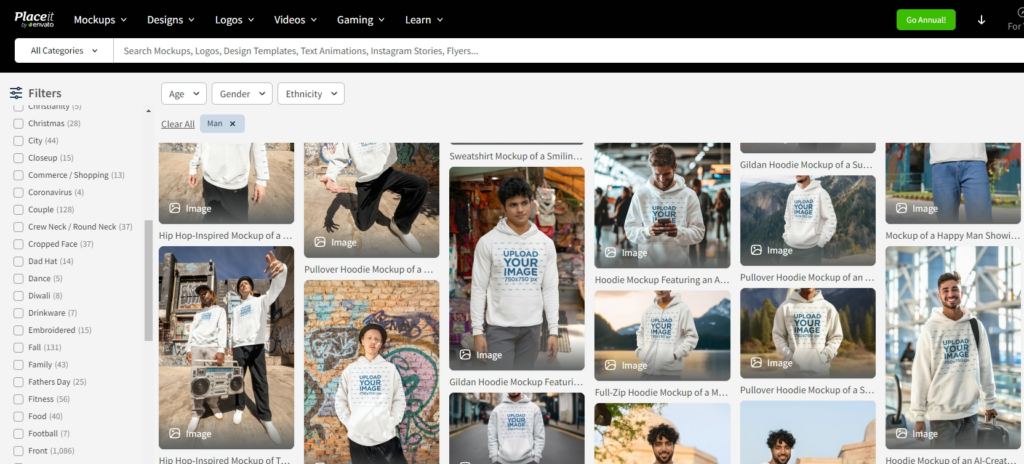
Elementor’s Design Prowess
If you’re using Elementor to build your WooCommerce store, you’ll be pleased to know that its intuitive drag-and-drop interface extends to product design as well. Elementor’s WooCommerce Builder allows you to customize the look and feel of your product pages, giving you full control over how your POD creations are presented to customers. This includes options for showcasing product mockups, adding custom elements, and creating visually appealing product galleries.
The Importance of Design in POD
Your product designs are the heart and soul of your POD business. They need to be eye-catching, unique, and relevant to your target audience. Investing time in creating high-quality designs that resonate with your customers can significantly impact your sales and brand recognition.
The 7 Best Print-on-Demand Companies for WooCommerce: In-Depth Reviews
Now that you understand the key criteria for choosing a POD partner let’s dive into detailed reviews of the seven best options available to WooCommerce store owners.
Printful
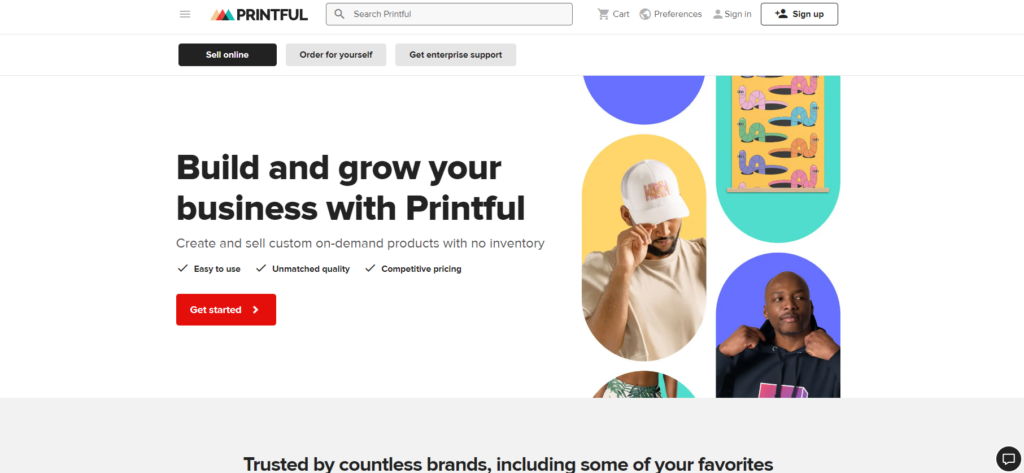
Printful is the 800-pound gorilla of the print-on-demand world, and for good reason. They offer a massive product catalog, top-notch print quality, and a user-friendly interface that’ll make you wonder why you didn’t start sooner.
Key Features:
- 300+ customizable products
- Seamless WooCommerce integration
- Warehousing and fulfillment services
- Robust mockup generator
- White-label branding options
Pros:
- Excellent print quality across all products
- Wide range of premium apparel brands
- Intuitive design tools and product creation process
- Reliable shipping with tracking on all orders
Cons:
- Higher base prices compared to some competitors
- Occasional stock issues during peak seasons
Pricing: No monthly fees; you only pay for products when orders are placed. Base prices vary by product.
WooCommerce Integration: Printful offers a free plugin for easy WooCommerce integration. Here’s a quick setup guide:
- Install the Printful Integration for WooCommerce plugin
- Connect your Printful account
- Sync your products
- Customize your store settings
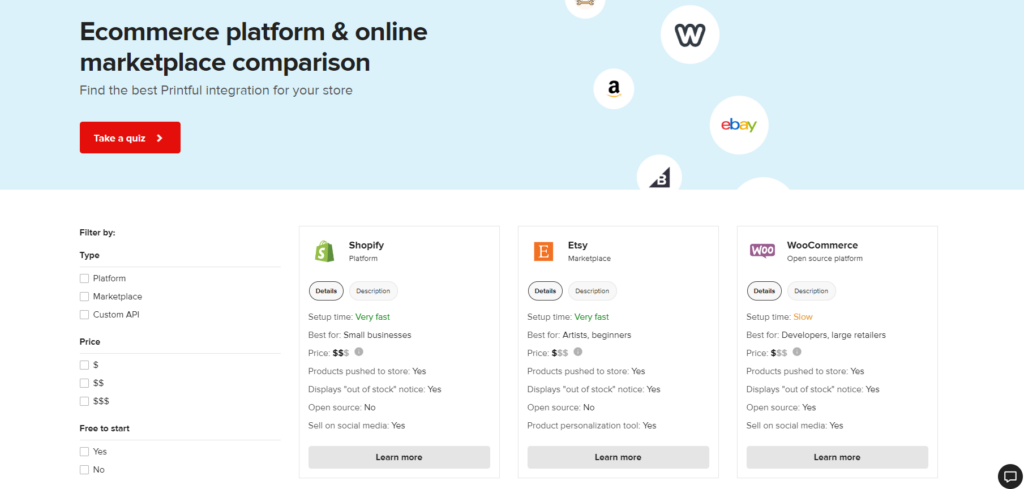
With Printful, you can automate your entire fulfillment process, leaving you free to focus on design and marketing.
Printify
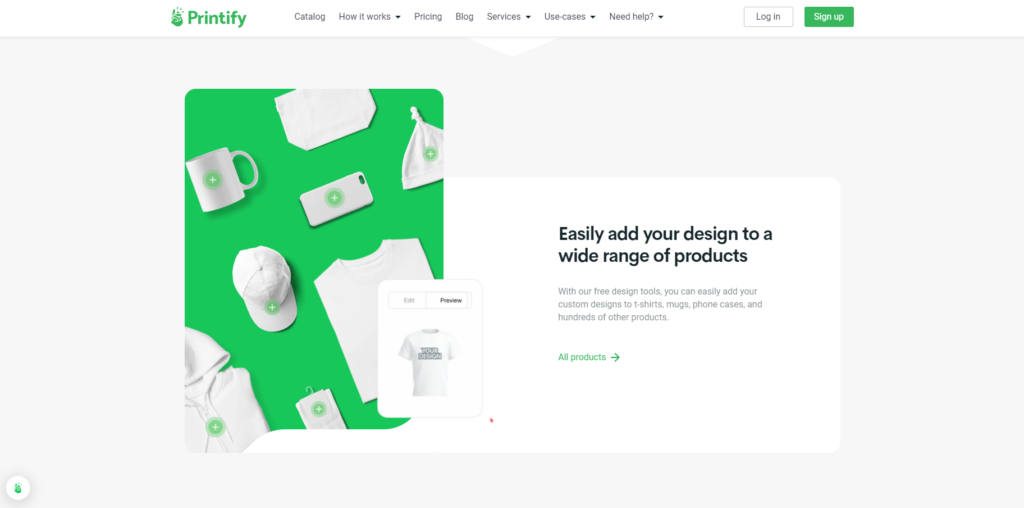
If Printful is the gorilla, Printify is the nimble cheetah of the POD world. They connect you with a network of print providers, giving you more options and potentially better prices.
Key Features:
- 300+ customizable products
- Network of 90+ print providers worldwide
- Custom product creation tool
- Mockup generator
Pros:
- Competitive pricing due to multiple suppliers
- Wide range of products and variants
- Ability to choose your preferred print provider
- Good quality control measures
Cons:
- Print quality can vary between providers
- Shipping times may be longer due to decentralized production
Pricing: Free plan available; Premium plan at $29/month offers better prices and more features.
WooCommerce Integration: Printify provides a straightforward WooCommerce integration:
- Install the Printify plugin from the WordPress repository
- Connect your Printify account
- Import and customize your products
- Publish to your store
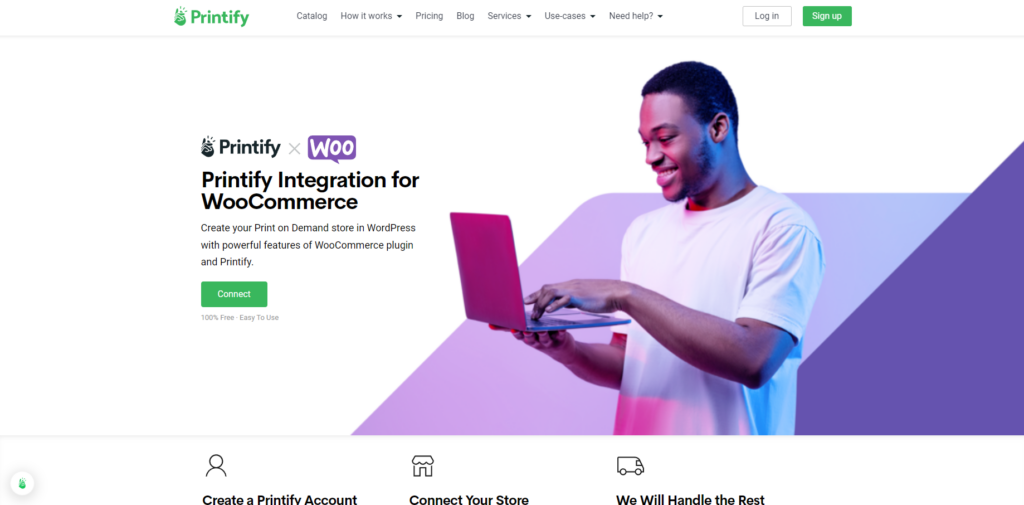
Printify’s multi-provider model can be a game-changer for price-conscious entrepreneurs looking to maximize profits.
SPOD (Spreadshirt Print-on-Demand)
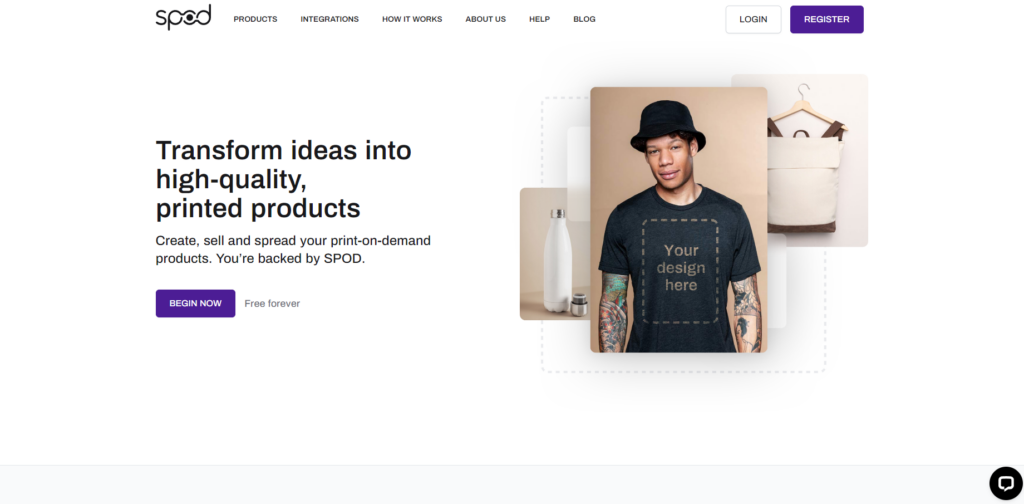
SPOD, Spreadshirt’s print-on-demand arm, brings German engineering precision to the POD game. It’s known for lightning-fast production times and eco-friendly practices.
Key Features:
- 200+ customizable products
- 48-hour production time guarantee
- Eco-friendly printing options
- Design services available
Pros:
- Extremely fast production and shipping
- High-quality, durable prints
- Strong focus on sustainability
- Competitive pricing on many items
Cons:
- Smaller product range compared to some competitors
- Limited branding options
Pricing: No monthly fees; pay only for products ordered.
WooCommerce Integration: SPOD offers a dedicated plugin for WooCommerce:
- Install the SPOD – Print-on-Demand plugin
- Connect your SPOD account
- Import products and customize designs
- Set your prices and publish
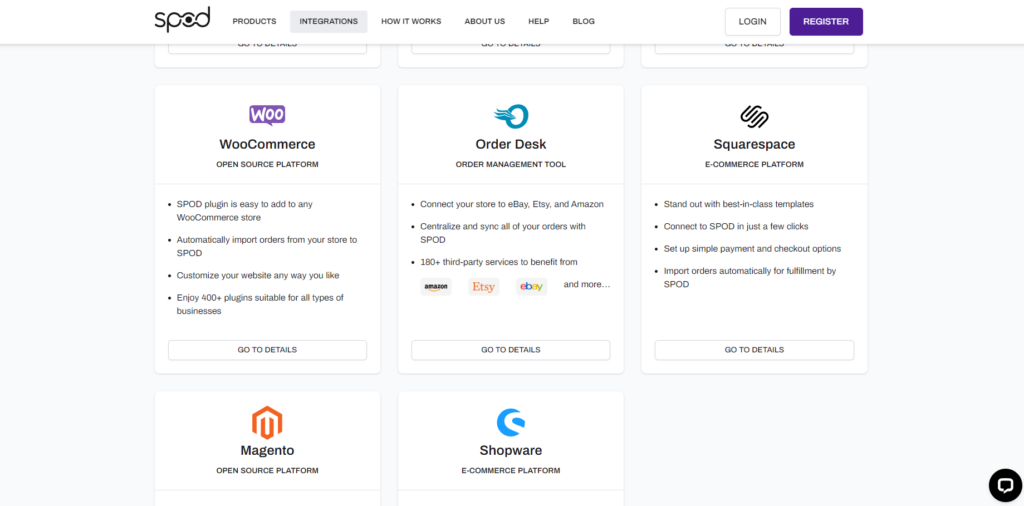
SPOD’s speed and eco-credentials make it a solid choice for businesses looking to minimize their environmental impact while maintaining quick turnaround times.
Gooten
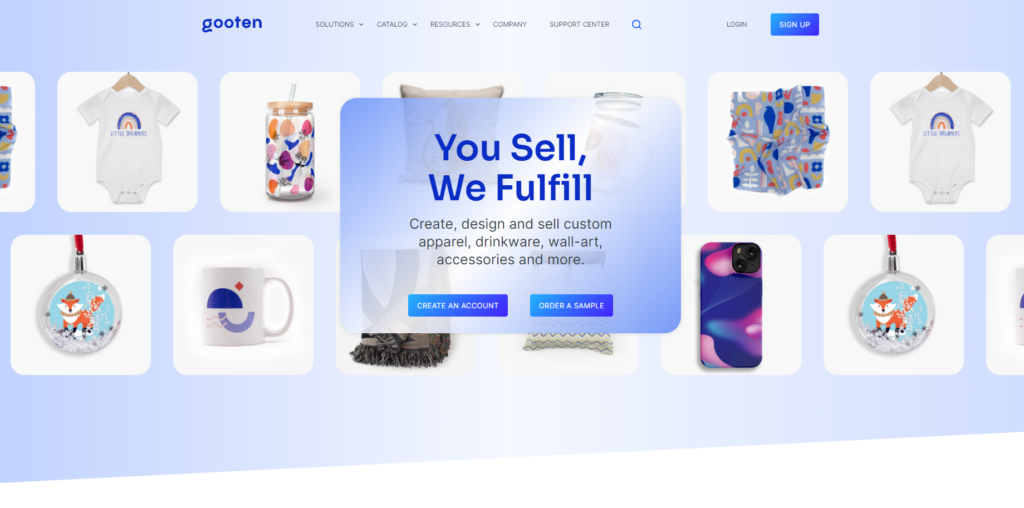
Gooten flies a bit under the radar but packs a punch with its global network of manufacturers and unique product offerings.
Key Features:
- 150+ customizable products
- Global production network
- Automated order routing for optimal fulfillment
- API access for custom integrations
Pros:
- Competitive pricing on many items
- Some unique product offerings not found elsewhere
- Robust order management system
- Good customer support
Cons:
- Less intuitive interface compared to some competitors
- The mockup generator could use improvement
Pricing: No monthly fees; pay per order.
WooCommerce Integration: Gooten provides a plugin for WooCommerce integration:
- Install the Gooten plugin
- Connect your Gooten account
- Import products and customize
- Set pricing and publish to your store
Gooten’s global network and unique products make it worth considering, especially if you’re looking to stand out in a crowded market.
Teelaunch
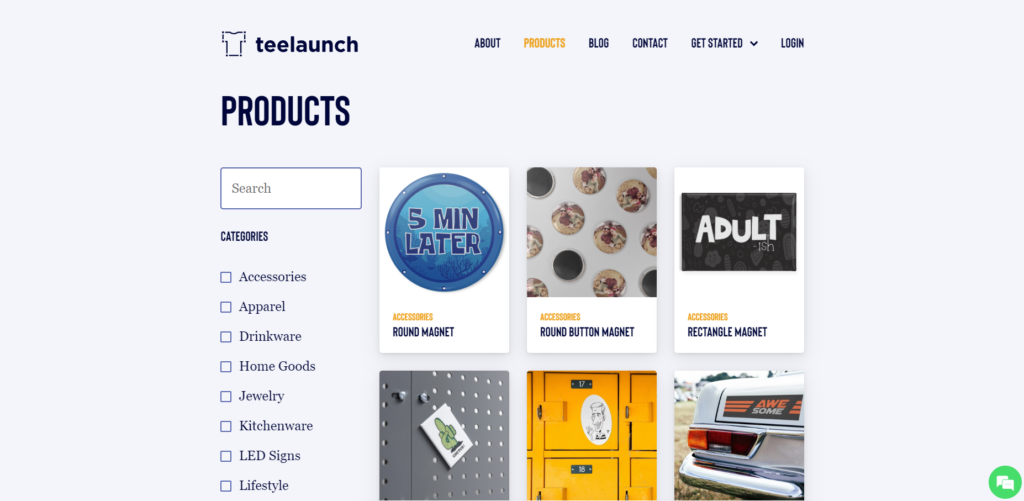
Teelaunch might be a smaller name in POD, but it’s gained a loyal following for its quality products and competitive pricing.
Key Features:
- 130+ customizable products
- All-over print options
- In-house production for many items
- Robust API for custom integrations
Pros:
- High-quality prints, especially for all-over designs
- Competitive pricing on many products
- Good customer support
- Some unique product offerings
Cons:
- Smaller product catalog compared to industry leaders
- Less intuitive interface for beginners
Pricing: No monthly fees; pay per order.
WooCommerce Integration: Teelaunch offers a plugin for WooCommerce:
- Install the Teelaunch WooCommerce plugin
- Connect your Teelaunch account
- Import and customize products
- Set pricing and publish
Teelaunch’s strength in all-over printing makes it a great choice for designers looking to create truly unique, eye-catching products.
CustomCat
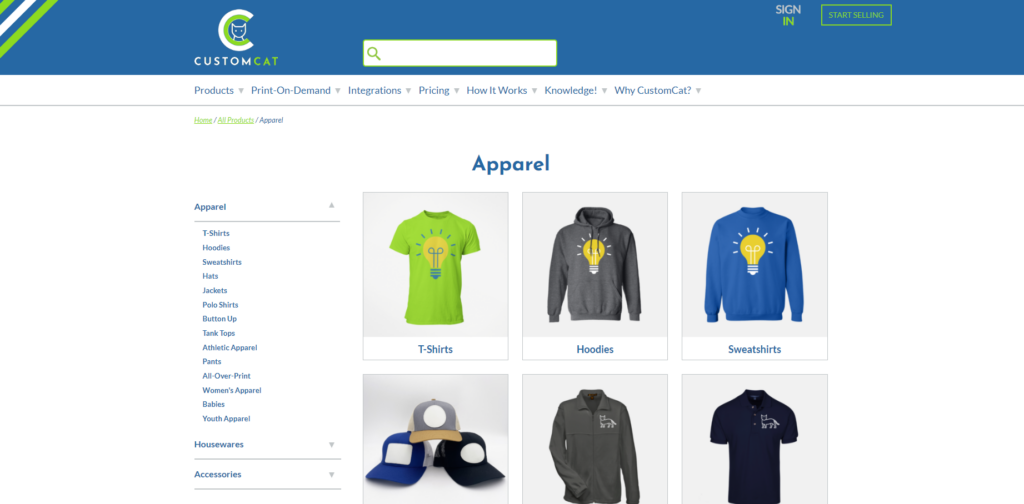
CustomCat is the speed demon of the POD world, boasting incredibly fast production times and a wide range of customization options.
Key Features:
- 550+ customizable products
- 24-48 hour production time
- In-house production for most items
- Bulk ordering options
Pros:
- Vast product catalog
- Extremely fast production times
- Competitive pricing, especially with the Pro plan
- Good print quality across product lines
Cons:
- The user interface can be clunky
- Customer support can be slow at times
Pricing: Free plan available; Pro plan at $30/month offers significant discounts on products.
WooCommerce Integration: CustomCat provides a plugin for WooCommerce:
- Install the CustomCat plugin
- Connect your CustomCat account
- Import products and customize designs
- Set pricing and publish to your store
CustomCat’s combination of speed, variety, and competitive pricing makes it a strong contender, especially for high-volume sellers.
Printsome
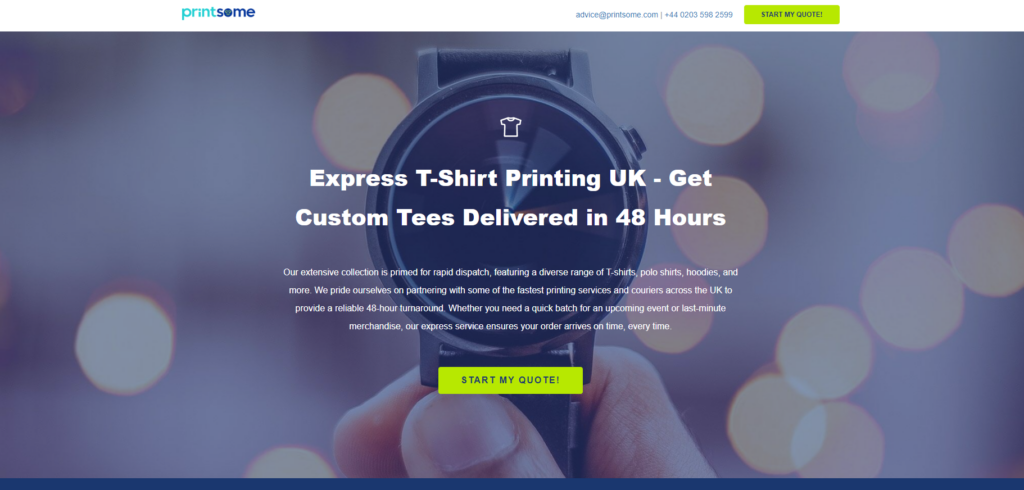
Printsome brings a touch of European flair to the POD scene, offering a curated selection of high-quality products focused on sustainability.
Key Features:
- 100+ customizable products
- Emphasis on eco-friendly and ethically produced items
- Design assistance services
- Bulk ordering options
Pros:
- High-quality, ethically sourced products
- Strong focus on sustainability
- Excellent customer service
- Good print quality and consistency
Cons:
- Smaller product range compared to some competitors
- Higher prices on some items due to quality focus
Pricing: No monthly fees; pay per order.
WooCommerce Integration: Printsome offers a plugin for WooCommerce:
- Install the Printsome WooCommerce plugin
- Connect your Printsome account
- Import and customize products
- Set pricing and publish
Printsome’s commitment to quality and sustainability makes it an excellent choice for brands looking to appeal to eco-conscious consumers.
Setting Up Your WooCommerce POD Store: A Step-by-Step Guide
Ready to launch your own print-on-demand empire? This step-by-step guide will walk you through the process of setting up your WooCommerce POD store, from choosing the right platform to marketing your products.
Choosing Your Platform: WooCommerce vs. POD Marketplaces
Before diving into the setup process, it’s important to decide whether you want to build your store on WooCommerce or leverage a POD marketplace like Etsy or Redbubble. Each option has its own advantages and drawbacks:
WooCommerce:
- Pros: Full control over your brand and store design, customizable product pages, access to a vast library of plugins and extensions, and the ability to sell other products alongside POD items.
- The cons are that it requires more technical setup and maintenance, requires more responsibility for marketing and customer service, and potentially has higher upfront costs for website hosting and domain registration.
POD Marketplaces:
- Pros: Easy setup and minimal technical knowledge required, built-in audience and traffic, simplified product listing and order management.
- The cons are limited customization options, high competition, marketplace fees that can eat into profit margins, and less control over your brand and customer relationships.
For those seeking greater control, flexibility, and branding opportunities, WooCommerce is the clear winner. With Elementor’s intuitive drag-and-drop interface, you can easily build a professional-looking online store that reflects your unique brand identity.
Installing & Configuring Your POD Plugin
Once you’ve chosen WooCommerce as your platform, the next step is to install and configure the POD plugin for your chosen provider. Each of the seven companies we’ve reviewed offers its own plugin, which you can find in the WordPress plugin repository or on the company’s website.
Installation typically involves:
- Downloading the plugin file.
- Uploading it to your WordPress dashboard.
- Activating the plugin.
- You are connecting your WooCommerce store to your POD account using API keys or authentication tokens.
After connecting the plugin, you’ll need to configure settings such as:
- Product Syncing: Choose which products you want to import from your POD catalog and how often you want to sync them with your WooCommerce store.
- Order Fulfillment: Set up automatic order routing so that orders placed in your store are automatically sent to the POD provider for fulfillment.
- Shipping: Configure shipping settings to ensure accurate shipping cost calculations and timely delivery to customers.
- Pricing: Set your retail prices and profit margins for each product.
Each POD plugin has its own unique settings and configuration options, so be sure to consult the provider’s documentation for detailed instructions.
Designing Your Products: Bring Your Vision to Life
With your WooCommerce store and POD plugin set up, it’s time to unleash your creativity and design your custom products. This is where your unique brand identity and target audience preferences truly shine.
Here are some essential tips for designing products that sell:
- Know Your Niche: Understand the interests, hobbies, and pain points of your target customers. This will help you create designs that resonate with them and spark their desire to purchase.
- Create High-Quality Designs: Invest in professional design software or hire a graphic designer if needed. High-resolution images, well-crafted typography, and eye-catching visuals will make your products stand out.
- Utilize Mockups: Mockup generators offered by POD companies or available online allow you to visualize your designs on different products before they’re printed. This ensures your vision translates well into the final product.
- Offer Personalization: Allow customers to add their names, initials, or custom messages to certain products. This adds a personal touch and increases the perceived value of your items.
Elementor’s Design Arsenal
For Elementor users, the design possibilities are even more extensive. You can use Elementor’s intuitive drag-and-drop interface to create custom product templates, showcase your designs in stunning galleries, and even incorporate interactive elements like product configurators that let customers personalize their items directly on your website.
Optimizing Images with Elementor
Since image quality is crucial for print-on-demand products, Elementor’s built-in image optimization tools can be a lifesaver. By compressing and optimizing your product images, you can ensure fast loading times without sacrificing visual appeal. This not only improves the user experience but also boosts your website’s SEO performance.
Pricing Strategies: Maximizing Your Profits
Setting the right prices for your print-on-demand products is a delicate balancing act. You need to consider factors like:
- Base Costs: The cost of the product and printing from your POD provider.
- Profit Margins: The amount you want to earn on each sale.
- Market Research: The prices of similar products offered by competitors.
- Perceived Value: The value customers place on your unique designs and brand.
A common mistake is setting prices too low to compete, which can lead to minimal profits and undervalue your work. On the other hand, pricing too high can deter potential customers.
Tips for Effective Pricing:
- Calculate Your Costs: Start by adding up all the costs associated with producing and shipping your product (base cost, shipping fees, transaction fees).
- Set a Profit Margin: Determine the percentage of profit you want to make on each sale. A typical range is 20-30%, but it can vary depending on your niche and product type.
- Factor in Perceived Value: Consider the unique value your designs bring to the table. If you have a strong brand or highly sought-after designs, you can justify higher prices.
- Research Competitors: Analyze the prices of similar products offered by other POD stores or on marketplaces like Etsy. This will give you a benchmark for setting competitive prices.
- Offer Discounts and Promotions: Strategically offer discounts or bundle deals to attract new customers and incentivize repeat purchases.
Elementor’s Pricing Features
For WooCommerce store owners, Elementor offers several features that can help you optimize your pricing strategies:
- Dynamic Pricing: You can create rules to automatically adjust prices based on various factors, such as quantity purchased, customer group, or time of day.
- Sale Badges: Highlight discounted items with eye-catching sale badges to attract customers and boost sales.
- Product Bundles: Encourage customers to buy more by offering bundled products at a discounted price.
By leveraging these tools, you can fine-tune your pricing strategies and maximize your profit potential.
Marketing Your Store: Spreading the Word About Your Unique Creations
Once your WooCommerce POD store is up and running, it’s time to attract customers and drive sales. Effective marketing is essential for standing out in the competitive e-commerce landscape. Here are some strategies to consider:
- Search Engine Optimization (SEO): Optimize your product titles, descriptions, and meta tags with relevant keywords to improve your store’s visibility in search engine results. This will help potential customers find your products organically.
- Social Media Marketing: Leverage social media platforms like Instagram, Facebook, and Pinterest to showcase your products, engage with your audience, and run targeted advertising campaigns. Share high-quality images, behind-the-scenes glimpses of your design process, and customer testimonials to build excitement and trust.
- Email Marketing: Build an email list and send regular newsletters featuring new products, promotions, and exclusive offers. Segment your list based on customer interests and preferences to deliver personalized messages that resonate.
- Content Marketing: Create blog posts, videos, or social media content that showcases your products in action or provides valuable information related to your niche. This can help attract organic traffic to your store and establish you as an authority in your field.
- Influencer Marketing: Partner with influencers in your niche to promote your products to their followers. This can expose your brand to a wider audience and generate buzz around your creations.
- Paid Advertising: Consider investing in paid advertising platforms like Google Ads or social media ads to reach a broader audience and drive targeted traffic to your store. You can create highly specific campaigns based on demographics, interests, and search terms to attract potential customers who are actively looking for products like yours.
- Public Relations (PR): Reach out to bloggers, journalists, or online publications in your niche to secure media coverage for your store and products. Positive reviews and press mentions can significantly boost brand awareness and credibility.
- Partnerships and Collaborations: Team up with other businesses or influencers to cross-promote each other’s products and services. This can expose your brand to new audiences and create mutually beneficial relationships.
- Loyalty Programs and Referral Marketing: Implement a loyalty program to reward repeat customers and encourage them to refer friends and family to your store. This can foster a sense of community and incentivize word-of-mouth marketing.
Elementor’s Marketing Arsenal
For Elementor users, there are numerous marketing tools and integrations available to streamline your efforts:
- Popups & Forms: Create eye-catching popups to capture email addresses and promote special offers.
- Social Media Integrations: Easily connect your store to your social media profiles for seamless sharing and engagement.
- Marketing Widgets: To enhance conversions, add countdown timers, testimonials, and other marketing elements to your product pages.
- SEO Optimization: Elementor offers built-in SEO features to help you optimize your pages for search engines.
By leveraging these tools, you can amplify your marketing efforts and reach a wider audience, driving more traffic and sales to your WooCommerce POD store.
Beyond the Basics: Scaling Your POD Business with Elementor & Beyond
Congratulations! Your WooCommerce print-on-demand store is live and ready for business. But the journey continues. To truly thrive in the competitive POD landscape, you’ll need to focus on scaling your operations, optimizing your website, and expanding your reach. Let’s explore some strategies to take your POD business to the next level.
Website Optimization: A Beautiful and High-Performing Storefront
Your website is your virtual storefront, so it’s crucial to make a lasting impression on your visitors. A well-designed, fast-loading, and user-friendly website can significantly impact your sales and brand image.
Leveraging Elementor Pro
If you’re using Elementor to build your WooCommerce store, consider upgrading to Elementor Pro for enhanced design and functionality. With Elementor Pro’s Theme Builder, you can create custom templates for every aspect of your website, including product pages, headers, footers, and archive pages. This ensures a consistent brand identity and user experience throughout your site.
Additionally, Elementor Pro’s dynamic content feature allows you to personalize content based on user behavior, location, or purchase history. This can help you create targeted marketing campaigns and boost conversions.
Speed Optimization for POD Products
Print-on-demand product pages often contain large, high-resolution images, which can slow down page loading times. To ensure a smooth shopping experience, optimize your product images using Elementor’s built-in image optimization tools. You can also implement lazy loading, which only loads images when they’re visible on the screen, further improving page speed.
Mobile Responsiveness: Reach Customers On the Go
With the majority of online traffic coming from mobile devices, it’s crucial to ensure your WooCommerce POD store is fully responsive. Elementor makes it easy to create mobile-friendly designs, allowing you to cater to customers on smartphones and tablets without sacrificing user experience.
Elementor’s Marketing Arsenal
For Elementor users, there are numerous marketing tools and integrations available to streamline your efforts:
- Popups & Forms: Create eye-catching popups to capture email addresses and promote special offers. Use Elementor’s intuitive drag-and-drop interface to design visually appealing popups that match your brand’s aesthetic.
- Social Media Integrations: Easily connect your store to your social media profiles for seamless sharing and engagement. Elementor’s social media widgets make it easy to add social sharing buttons, feeds, and icons to your website.
- Marketing Widgets: Add countdown timers, testimonials, and other marketing elements to your product pages to enhance conversions. Elementor offers a wide range of widgets specifically designed for marketing purposes.
- SEO Optimization: Elementor offers built-in SEO features to help you optimize your pages for search engines. This includes customizable meta tags, SEO-friendly URLs, and schema markup support.
By leveraging these tools, you can amplify your marketing efforts and reach a wider audience, driving more traffic and sales to your WooCommerce POD store.
Branding & Storytelling: Building a Loyal Following
In the world of print-on-demand, where countless sellers offer similar products, establishing a strong brand identity is key to standing out. Your brand is more than just a logo; it’s the story, values, and personality that your customers connect with.
Craft a compelling brand story that resonates with your target audience. Share your inspirations, your design process, and the meaning behind your products. Use consistent visuals, messaging, and tone of voice across your website, social media, and marketing materials to create a cohesive brand experience.
Engage with your audience on a personal level. Respond to comments and messages, share user-generated content, and create a community around your brand. When customers feel connected to your story and values, they’re more likely to become loyal fans and advocates.
Elementor’s Branding Tools
Elementor can be a powerful ally in building your brand identity. Its design flexibility allows you to create a unique visual style that reflects your brand’s personality. You can customize fonts, colors, layouts, and other elements to create a cohesive look and feel across your website.
Elementor’s Theme Builder is particularly useful for branding purposes. It allows you to create custom headers, footers, and other global elements that reinforce your brand identity on every page. You can also use Elementor’s dynamic content feature to personalize content based on user behavior, further enhancing the customer experience.
Scaling Tips: Growing Your POD Empire
Once you’ve established a solid foundation, it’s time to focus on scaling your POD business. Here are some strategies to consider:
Expand Your Product Lines: Don’t limit yourself to a few product types. Experiment with new offerings, explore different niches and cater to a broader range of customer interests.
Upselling & Cross-selling: Encourage customers to purchase more by suggesting complementary products or offering bundle deals. Elementor’s WooCommerce Builder makes it easy to implement upselling and cross-selling features on your product pages.
International Expansion: Translate your store into different languages and target new markets to reach a global audience. Elementor’s multilingual capabilities can help you create a seamless experience for international customers.
Customer Loyalty and Retention:
Building a loyal customer base is essential for long-term success. Happy customers are more likely to return for repeat purchases and recommend your brand to others. Implement strategies to foster customer loyalty:
- Exceptional Customer Service: Respond promptly to inquiries, resolve issues efficiently, and go the extra mile to exceed customer expectations.
- Loyalty Programs: Offer rewards, discounts, or exclusive access to loyal customers to incentivize repeat purchases.
- Personalized Experiences: Use Elementor’s dynamic content feature to tailor product recommendations, promotions, and messaging based on individual customer preferences and purchase history.
- Community Building: Foster a community around your brand to create a sense of belonging. Encourage user-generated content, host contests or giveaways, and interact with customers on social media.
By prioritizing customer satisfaction and building a strong brand community, you can turn one-time buyers into lifelong fans who actively promote your products.
Analyzing and Adapting: The Key to Continuous Growth
To stay ahead in the ever-evolving world of e-commerce, it’s crucial to analyze your store’s performance and adapt your strategies accordingly. Use analytics tools to track website traffic, sales, conversion rates, and customer behavior.
Identify your best-selling products and invest more in promoting them. Experiment with different marketing tactics and track their effectiveness. Pay attention to customer feedback and use it to improve your product offerings and customer experience.
Elementor’s Analytics Integration
For Elementor users, integrating Google Analytics is a breeze. With just a few clicks, you can track essential metrics and gain valuable insights into your website’s performance. This data can help you make informed decisions about your marketing strategies, product offerings, and overall business direction.
By embracing a data-driven approach and continuously refining your strategies, you can ensure that your WooCommerce POD store remains competitive and continues to grow.
Conclusion
Print-on-demand has revolutionized the way entrepreneurs create and sell custom products, and WooCommerce provides the perfect platform to showcase and manage your POD business. By carefully considering the criteria outlined in this guide and exploring the seven best POD companies for WooCommerce, you’re well on your way to building a thriving online store filled with unique, personalized products.
Remember choosing the right POD partner is just the first step. By investing in high-quality designs, optimizing your website, and implementing effective marketing strategies, you can unlock the full potential of print-on-demand and create a custom merch empire that truly stands out.
So, what are you waiting for? Embrace the power of POD and Elementor, and start building your dream business today!
Looking for fresh content?
By entering your email, you agree to receive Elementor emails, including marketing emails,
and agree to our Terms & Conditions and Privacy Policy.
